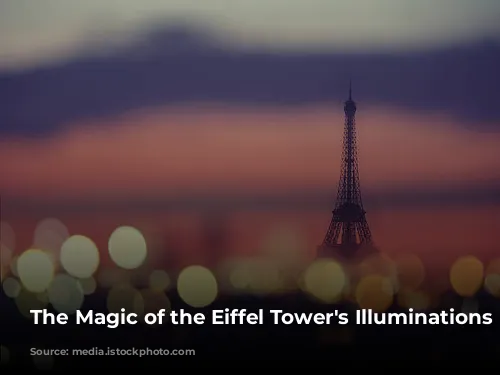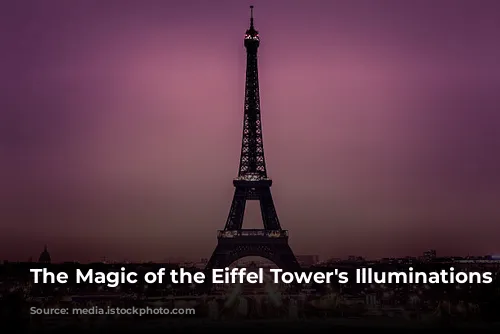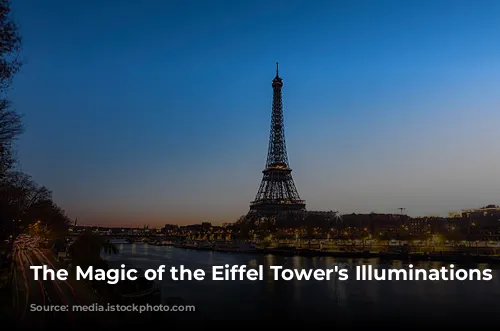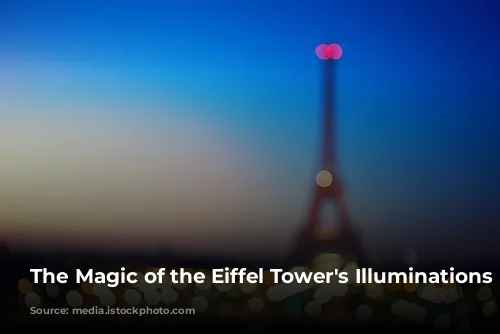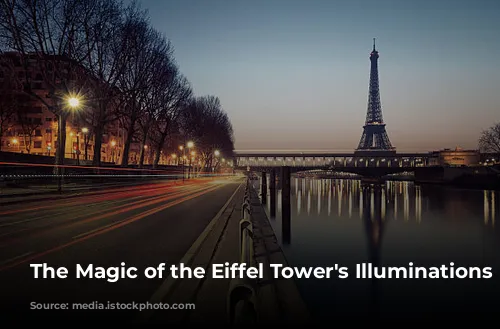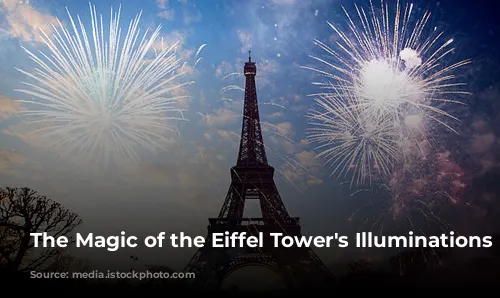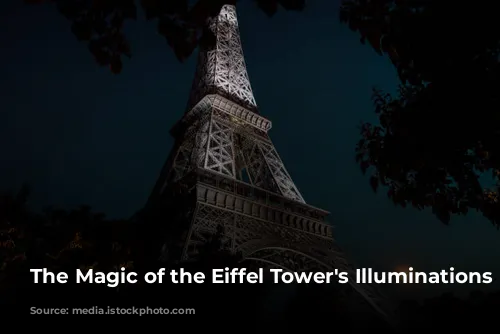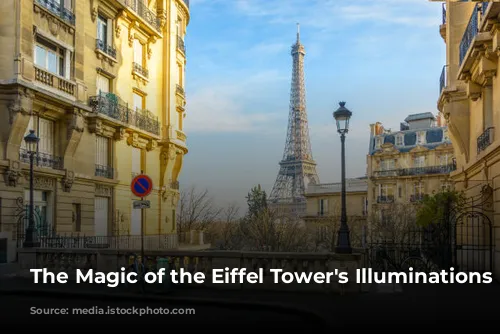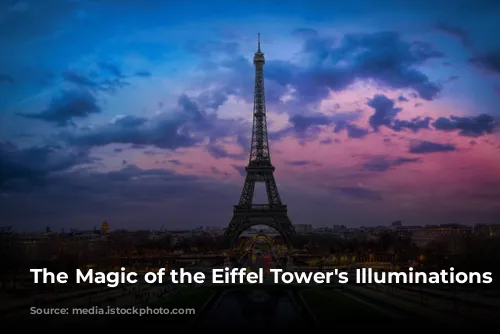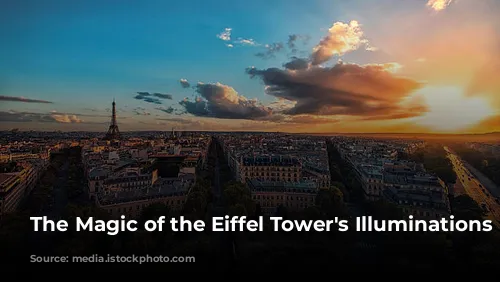The Eiffel Tower stands tall against the Parisian sky, but its true magic comes alive when night falls. This iconic landmark is not just a structure of steel but a canvas for light, history, and celebration. Each evening, the Iron Lady bathes the City of Lights in a captivating glow, captivating both tourists and locals alike. But what exactly are these illuminations, and how can you experience them to the fullest?

Illuminations Explained: Your Nighttime Guide
To answer your burning questions, the Eiffel Tower is illuminated every night from sunset until 1:00 AM, extending to 2:00 AM during the summer months. You’ll catch the Iron Lady twinkling for 5 minutes every hour, a spectacle that has become an integral part of the Parisian evening.
For the ultimate view of this light show, head to the Trocadero, take a Seine River cruise, or ascend the Montparnasse Tower. Each vantage point offers a unique perspective of this mesmerizing display.
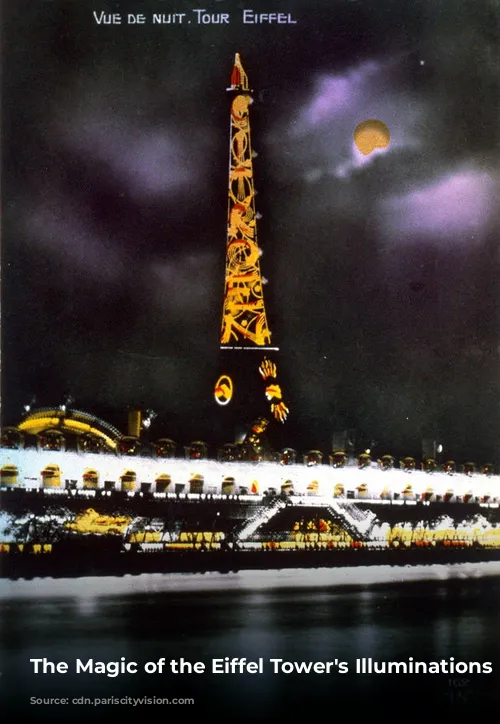
A History of Light and Celebration
The Eiffel Tower’s illuminations have evolved over the years, reflecting not only technological advancements but also the changing times.
From Gas to Electricity
The idea of illuminating the Eiffel Tower sparked as early as its construction in 1889. Initially, gaslights housed within opalescent glass globes provided the first nighttime illumination. A rotating lighthouse showcased the French flag’s colors. However, by the 1900 Universal Exhibition, the tower embraced electricity, boasting 5,000 light bulbs that adorned its facades.
The Glittering 20s and 30s
The 1920s and 1930s saw the Eiffel Tower transform into an advertising canvas. For example, the Citroen Group used the tower’s structure to display their brand name in a dazzling light show. In 1933, a clock tower with illuminated hands was installed, adding a touch of timekeeping to the already mesmerizing display. While this spectacle ended in 1936 due to cost concerns, it left its mark on the tower’s history.
A Tower Transformed for the World
Events throughout the 1970s and beyond have further solidified the Eiffel Tower’s role as a symbol of both national and global celebrations.
The Millennium’s Glow
The turn of the millennium brought with it a spectacle like no other. A countdown clock adorned the tower in 1997, leading up to the grand spectacle of New Year’s Eve 2000. The Eiffel Tower blazed with a pyrotechnic show, a testament to the new era. The following year, the tower shone in blue, celebrating the new millennium.
Honoring Events and Causes
The Eiffel Tower has also served as a canvas for expressing solidarity and raising awareness for global issues. In 2004, the tower was lit up in red in honor of the Chinese New Year, and in 2006, it glowed blue for the Europe Festival.
The Rugby World Cup in 2007 saw the tower transformed into a rugby field, featuring a giant rugby ball and a score board. This event solidified the tower’s role as a symbol of international events and sportsmanship.
In 2007, the Eiffel Tower participated in the “Five-Minute Break for the Planet” by switching off its lights, signifying a commitment to sustainability. In 2014, the tower was bathed in pink, showcasing solidarity for the fight against breast cancer.
Witnessing the Eiffel Tower’s Magic
Whether you stand at the Trocadero with the Parisian skyline as your backdrop, glide along the Seine with the Iron Lady reflected in the water, or enjoy the panoramic view from the Montparnasse Tower, the Eiffel Tower’s nighttime illuminations are an unforgettable experience.
Each night, the Eiffel Tower tells a story, not only of its own history but also of the events and sentiments that have shaped the world. So, the next time you find yourself in the City of Lights, take a moment to appreciate this iconic structure, and you’ll be amazed by the magic that unfolds under the Parisian sky.
